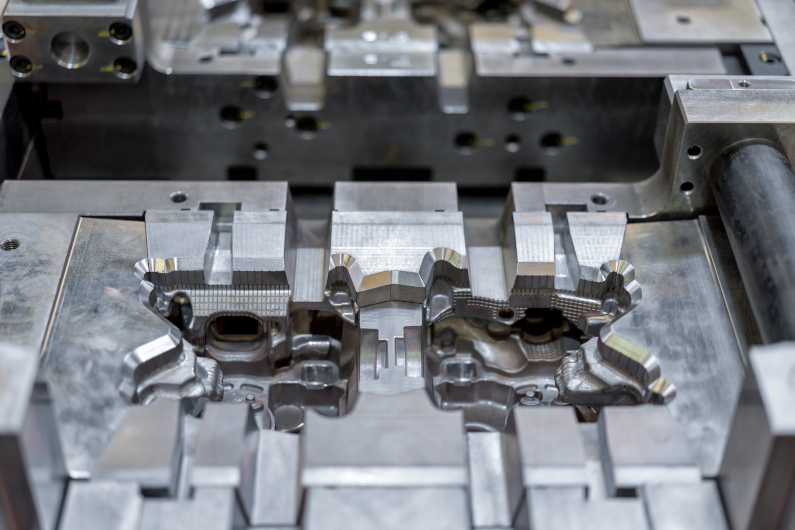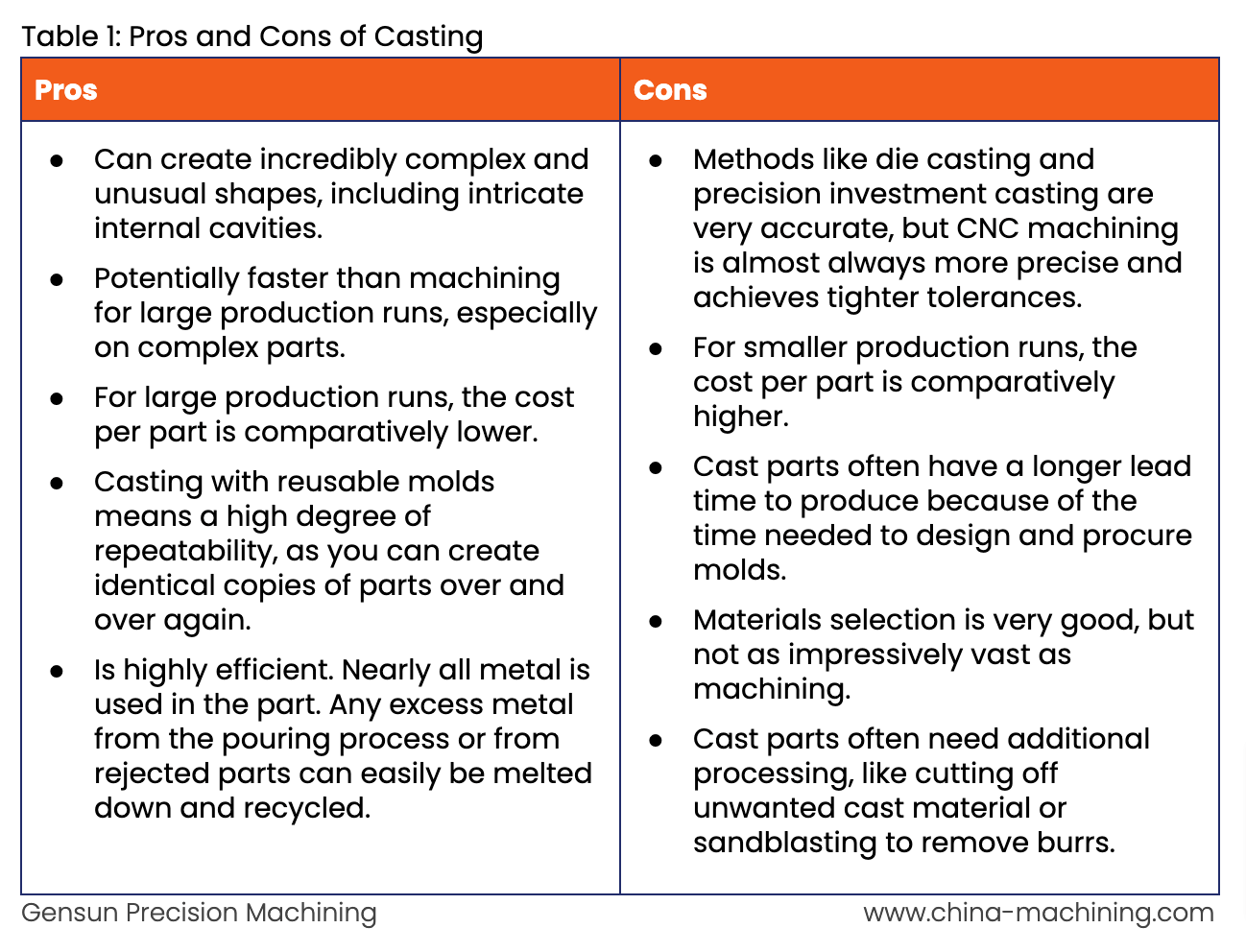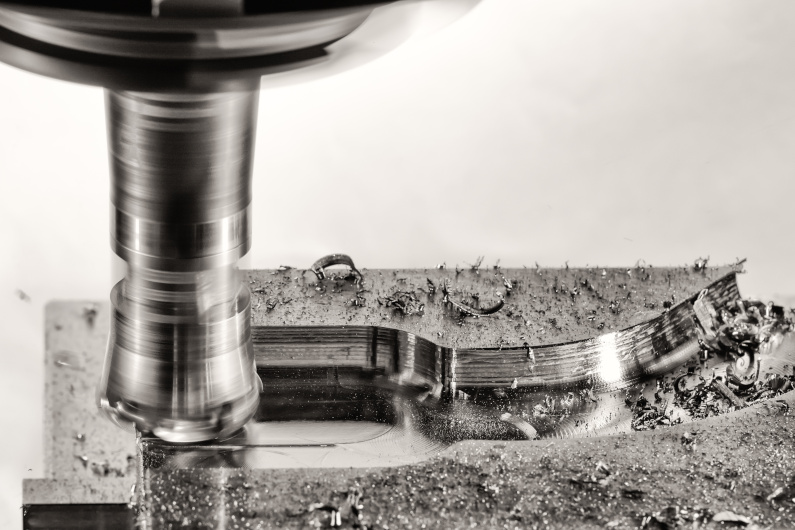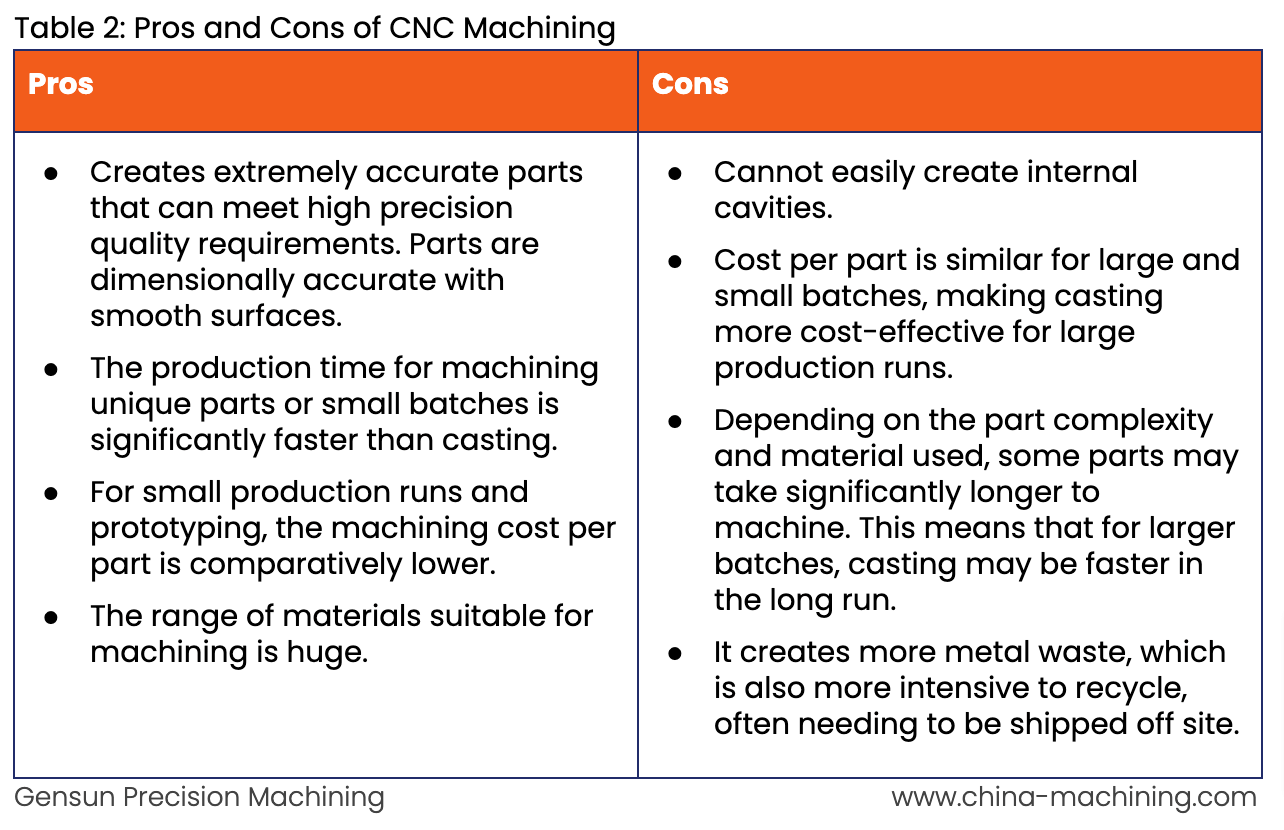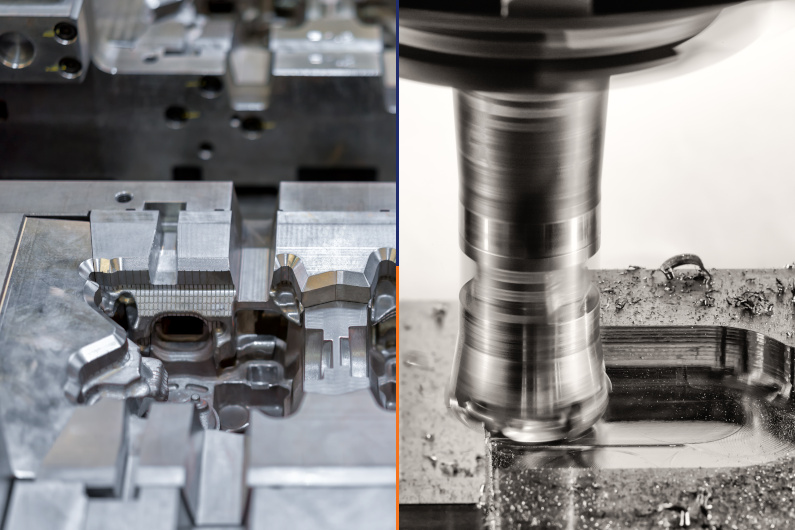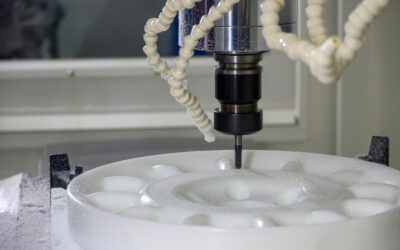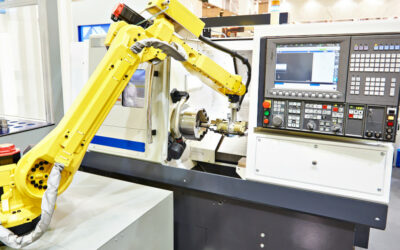When product designers need to manufacture a metal part, they’ll find they have a wide variety of fabrication methods to choose from. Among these, two of the most popular options are casting and machining. But how do they compare?
This article provides an overview of these two invaluable metal manufacturing processes, including some of their typical benefits and weaknesses. After this, you will understand how casting and machining compare and which is likely the best process for your manufacturing application.
What Is Casting?
Metal casting is a fabrication technique where molten metal is poured into a mold, sometimes called a die, where it cools until it completely solidifies. The solid metal part is then removed from the mold. In most cases, secondary finishing processes are used to further refine the cast metal component into a finished product.
There are many different metal casting techniques that can be used depending on the material selected, the size of the casting, the shape of the casting, and various other properties. Some of the most popular casting methods include die casting, sand casting, pressure casting, and investment casting.
Casting Pros and Cons
This table summarizes the most common advantages and disadvantages of the metal casting process for fabricators.
What Is CNC Machining?
CNC machining is a subtractive manufacturing process where a mill, lathe, or other machining equipment is fed a computer program that controls its operating parameters to selectively remove material from the base metal stock. After zeroing itself relative to the part to determine an origin point, the CNC machine incrementally removes small amounts of metal until the final shape is reached.
Depending on the context, CNC machining can refer to several different types of machining. This includes conventional machining processes, like CNC turning, milling, drilling, boring, and sawing, as well as modern, unconventional machining processes, like laser cutting, wire EDM, and abrasive waterjet cutting.
CNC Machining Pros and Cons
Machine shops commonly leverage a variety of equipment so that they can use the best tool for the job. It is not uncommon for a part to travel between multiple equipment stations if that is the most efficient process.
As such, this table summarizes the most common advantages and disadvantages of CNC machining considering that the fabricator has access to a variety of suitable CNC machines.
Casting vs. Machining: Choosing the Best Method
When it comes to comparing casting vs. CNC machining, both are invaluable metal manufacturing methods. This means that choosing the right method depends on your project restrictions and final part requirements. Generally speaking:
- CNC machining is the preferred method for prototyping unique parts or rapidly producing small and medium-sized production volumes. Choose machining when you have very strict tolerance requirements for part precision and surface finish.
- Metal casting is the preferred method for producing large volumes of identical products. It can also be used to produce complex internal cavities that are challenging or impossible to recreate with other methods.
There may also be some cases where a combination of casting followed by precision CNC machining is the most efficient and reliable way to produce a part. When you produce pieces by this method, they are referred to as machined castings.
Gensun has you covered either way.
We offer reliable professional services for die casting, precision investment casting, and CNC machining to help you produce high-quality goods quickly and at an affordable cost.

